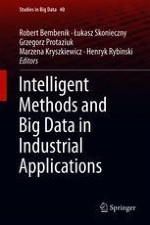2019 | OriginalPaper | Buchkapitel
Multimodal Learning Determines Rules of Disease Development in Longitudinal Course with Parkinson’s Patients
verfasst von : Andrzej W. Przybyszewski, Stanislaw Szlufik, Piotr Habela, Dariusz M. Koziorowski
Erschienen in: Intelligent Methods and Big Data in Industrial Applications
Aktivieren Sie unsere intelligente Suche, um passende Fachinhalte oder Patente zu finden.
Wählen Sie Textabschnitte aus um mit Künstlicher Intelligenz passenden Patente zu finden. powered by
Markieren Sie Textabschnitte, um KI-gestützt weitere passende Inhalte zu finden. powered by
